Mnemonics: Human Reproduction | Biology Class 12 - NEET PDF Download
The reproductive events in humans include the formation of gametes (gametogenesis), i.e., sperm in males and ovum in females, transfer of sperm into the female genital tract (insemination) and fusion of male and female gametes (fertilisation) leading to the formation of a zygote. This is followed by the formation and development of the blastocyst and its attachment to the uterine wall (implantation), embryonic development (gestation) and delivery of the baby (parturition).
Very difficult to remember, know!!!
Let's try to make it easy
Mnemonic: "Giggling Sisters Find Bliss In Every Party"
Mnemonic Explanation:
Where each word corresponds to a key event:
- Giggling - Gametogenesis (formation of sperms in males and ovum in females)
- Sisters - Sperm transfer (insemination into the female genital tract)
- Find - Fertilisation (fusion of male and female gametes to form a zygote)
- Bliss - Blastocyst formation (development of zygote into a blastocyst)
- In - Implantation (attachment of blastocyst to the uterine wall)
- Every - Embryonic development (gestation, the growth and development of the embryo)
- Party - Parturition (delivery of the baby)
Does this mnemonic make it easier to remember all the events in human reproduction with a clear mental map?
Let’s Master Human Reproduction in detail, covering all parts of the reproductive system, processes, hormones, and glands, with additional mnemonics!
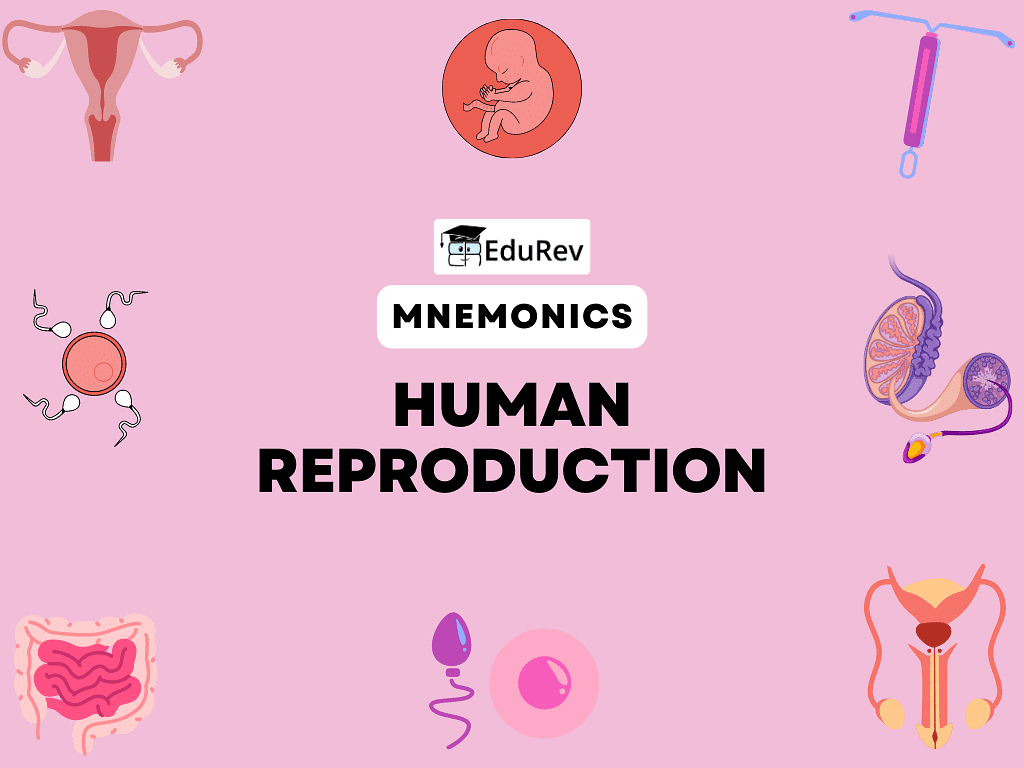
1. Male Reproductive System
Located in the pelvis region.Includes
1. Testes along with Accessory Ducts
2. Glands
3. External Genitilia
(i) Accessory Ducts: Rete Testis, Vasa Efferentia, Epididymis, and Vas Deferens (In the Sequence, it follows the Pathway of Sperm)
Mnemonic: "RT VeerE Ek VeeD"
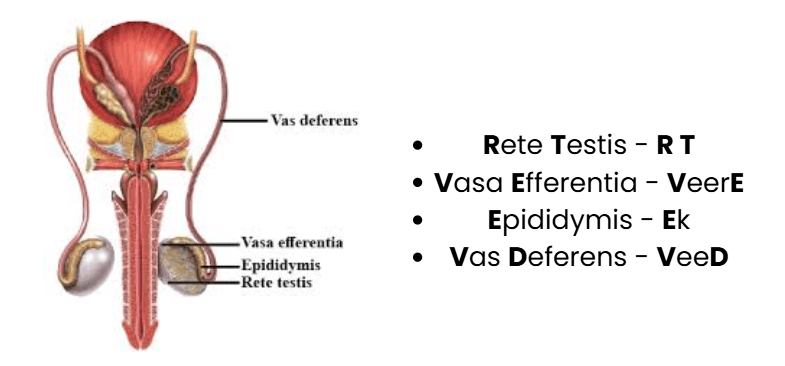
(ii) Glands: Seminal vesicles, Prostate gland, Bulbourethral glands
Mnemonic: Silly Popaye Brags
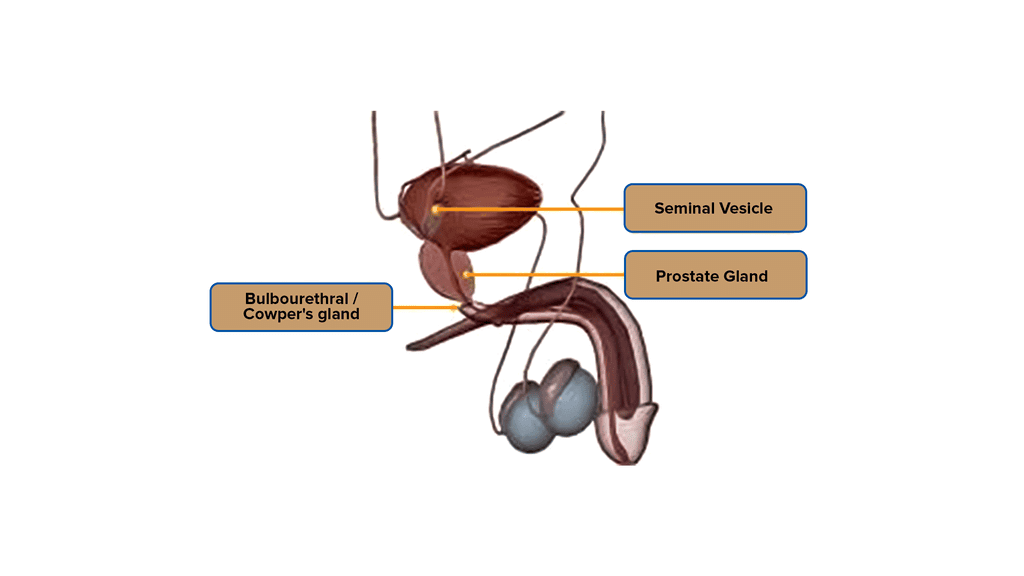
(iii) External Genetilia: Penis
Now let's learn the path of the Sperm
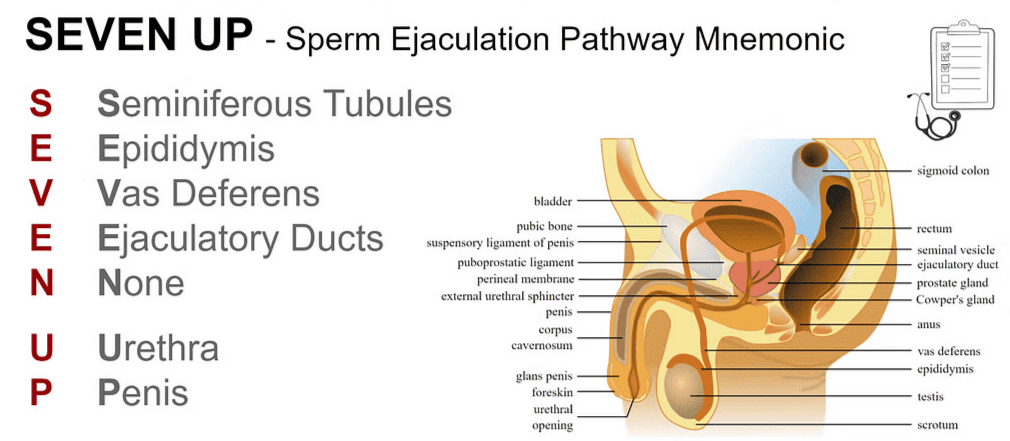
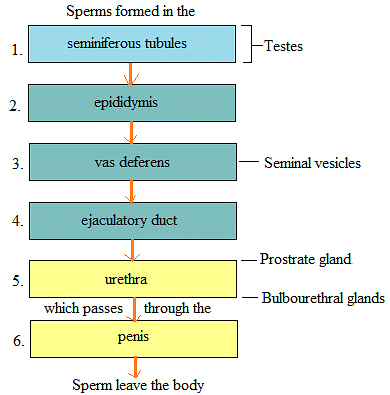
2. Female Reproductive System
(i) Internal Genetilia: a pair of ovaries alongwith a pair of oviducts, uterus, cervix, vagina.
Mnemonic: Ohh Oo U Cute Vitamin

(ii) External Genetilia : mons pubis, labia majora, labia minora, hymen and clitoris
Mnemonic: MP LM2 HC
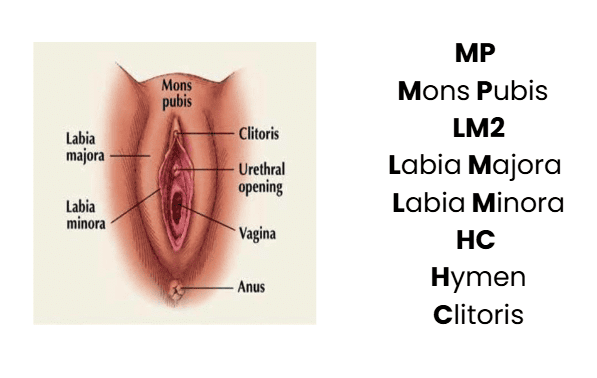
3. Spermatogenesis and Oogenesis

Spermatogenesis: S →PS→SS→S→S ( We have to remember Spermatogonia, spermatocytes, Primary and secondary, spermatids, spermatozoa)
Oogenesis: O→PO→SO→O ( Oogonia , Oocyte Primary and Secondary , Ovum)
4. Phases of Menstrual Cycle ( With Hormones)
Mnemonic: "Menstrual Blood Falls, Follicles Flourish, Estrogen Rises, Ovulation is the Peak, Lucky Progesterone Dominates."
Mnemonic Explanation:
Menstrual Phase - "Menstrual Blood Falls"
- M: Menstrual phase
- B: Bleeding (days 1-5)
- F: FSH (Follicle-Stimulating Hormone) starts to rise to stimulate the follicles.
Follicular Phase - "Follicles Flourish, Estrogen Rises"
- F: Follicular phase (starts on day 1 and overlaps with the menstrual phase but continues after bleeding stops)
- F: Follicles grow
- E: Estrogen rises, helping the follicle to mature and the endometrium to thicken.
Ovulation Phase - "Ovulation is the Peak"
- O: Ovulation (around day 14 in a typical cycle)
- P: LH Peak (Luteinizing Hormone surges, causing ovulation)
Luteal Phase - "Lucky Progesterone Dominates"
- L: Luteal phase (days 15-28)
- P: Progesterone rises, stabilizing the endometrium for potential implantation

5. Mammary Gland
Mnemonic: MAMAL
- M: Mammary gland
- A: Alveoli
- M: Mammary duct
- A: Ampulla
- L: Lactiferous duct

Mnemonic Explanation: The mnemonic trick "MAMAL" can help you recall the components of the mammary gland: Mammary gland (M), Alveoli (A), Mammary duct (M), Ampulla (A), and Lactiferous duct (L).
6. Hormones which act on the Mammary Gland
HOPEP
- H: Human Placental Lactogen
- O: Oxytocin
- P: Prolactin
- E: Estrogen
- P: Progesterone
Mnemonic Explanation: The mnemonic trick "HOPEP" can help you recall the hormones involved in lactation: Human Placental lactogen (H), Oxytocin (O), Prolactin (P), Estrogen (E), and Progesterone (P).
|
59 videos|290 docs|168 tests
|
FAQs on Mnemonics: Human Reproduction - Biology Class 12 - NEET
| 1. What are the main structures of the male reproductive system? |  |
| 2. What are the key differences between spermatogenesis and oogenesis? |  |
| 3. What are the phases of the menstrual cycle and the hormones involved? |  |
| 4. How does the mammary gland function in human reproduction? |  |
| 5. Which hormones act on the mammary gland and what are their roles? |  |






















